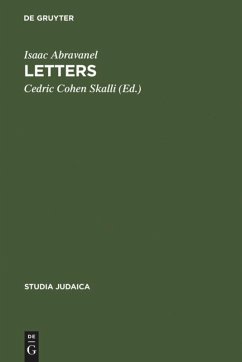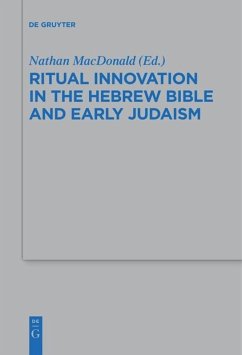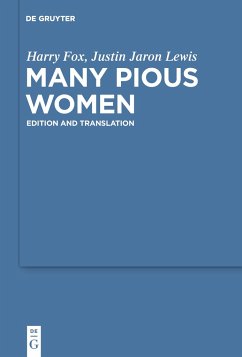
Glauben und Wissen im Zeitalter der Reformation
Der salomonische Tempel bei Abraham ben David Portaleone (1542-1612)

PAYBACK Punkte
0 °P sammeln!
In the upheavals of the 15th and 16th centuries, Judaism and the Catholic Church were both confronted with the question of the compatibility of tradition and the new view of the world. While the Catholic Church defended familiar modes of thought to maintain its authority, some representatives of Jewish culture saw the contrast between the old and new worlds as a fundamental moral issue. Both found an ideal model for representing their cultural and political ideas in the symbol of the Solomonic Temple. The aim of this study is to demonstrate parallels and to reconstruct the environment in which the Shilte ha-gibborim of Abraham ben David Portaleone were written.
In den Umwälzungen des 15.-16. Jh. stellte sich für das Judentum und die katholische Kirche die Frage nach der Vereinbarkeit von Tradition und neuer Weltanschauung. Während die katholische Kirche die vertrauten Denkformen zur Aufrechterhaltung ihrer Autorität verteidigte, wurde der Kontrast zwischen der alten und der neuen Welt bei einigen Vertretern der jüdischen Kultur zu einer grundlegenden Moralfrage. Beide fanden in dem Symbol des salomonischen Tempels ein ideales Darstellungsmodell ihrer kulturellen und politischen Vorstellungen.
Ziel dieser Arbeit ist es, Parallelen aufzuzeigen und das Umfeld zu rekonstruieren, in dem die Shilte ha-gibborim des Abraham ben David Portaleone entstanden sind.
Ziel dieser Arbeit ist es, Parallelen aufzuzeigen und das Umfeld zu rekonstruieren, in dem die Shilte ha-gibborim des Abraham ben David Portaleone entstanden sind.













